For the last two end-of-winter seasons Zach, the kiddos and I trekked down through our family’s campground in the woods and along the trail cleared out in the forest to tap Walnut trees for sap. I carried Benji in our backpack carrier, Zach carried the sap tapping supplies, and Fern carried her stuffed animal Lucy.
Along the trail we searched for Walnut trees, ruling out the other species making up the canopy of our family’s section – Oaks, Sycamore, Elm, Osage Orange, Locust, PawPaw, and Sugar Maple. Our winter tree-ID skills have definitely improved, and it helps to be able to look down at the ground and see it covered in walnut shells – a dead giveaway. The Sugar Maples are all too young to tap, so we decided to focus this season on Walnuts instead. Last season, we tapped 5 walnut trees and a few small Sugar Maples. This year we upped that to 8 Walnut and decided to let the Sugar Maples grow for a few more years before tapping them again.
You can see from the pictures that it’s a fairly simple process – I definitely recommend trying to tap trees if you have access to them. You can get the supplies at your local farm supply store or order a kit online! Other trees you can tap besides Sugar Maple are Walnut, Silver Maple (really any Maple!), Birch, Hickory, and even Sycamore.
The best time to tap trees is late winter through early spring, when freezing nights and thawing days create internal pressure that pushes sap upward. Drill a small hole in a mature tree, hammer in a spout, and hang a bucket or connect tubing that moves the sap down to a bucket. Last year we bought a sap tapping kit on Amazon (yeah, yeah, I know) that came with plastic spouts and tubing. This year we switched to metal spouts and liked those better – the metal spouts are easier to hammer in and remove from the tree; the plastic spouts broke easily and were hard to remove at the end of the season. We used food-grade tubing and 5 gallon buckets to collect the sap. Zach drilled a hole in the bucket lid so the tubing fit and the sap stayed fully sealed in the bucket and we didn’t have to worry about critters trying to get into it. One of our buckets had muddy raccoon paws all over it – Fern said “those sneaky racoons!”
We had our trees tapped for about a month and collected around 25 gallons of sap to boil down. We were casual sap collectors so sometimes the sap went bad and we had to dump some, but we were pleasantly surprised at our harvest! In the end we boiled down about one gallon of syrup. We boiled the sap in batches, usually on the weekend when we could be home for a while to boil it down. Next year, we want to boil the sap outside on a bigger burner and in a bigger pot. Once boiled down and filtered, Walnut sap tastes like the forest – unrefined, surprising, and completely authentic. It has a dark caramel color, a subtle sweetness, and a hint of nuttiness that reflects the deep character of the tree itself. Harvesting it is a way to deepen your connection to the forest and appreciate a native species in a whole new light.
Tapping walnut trees is more than just gathering sap—it’s a way to participate in the cycles of the landscape, to notice the changes in air and bark, to engage with trees as living beings rather than scenery. For naturalists, foragers, and forest wanderers, sap tapping time is a rewarding seasonal ritual that fosters both appreciation and stewardship.
We’re already looking forward to next year – scaling up our sap tapping operation so that we will have more syrup to share! Up next on our Forest Farming adventure – foraging Virginia Bluebell flowers and Wild Ginger roots, and before we know it, PawPaw season will be here again! We can’t wait to see what this year ahead holds.
~ Maggie Thomas Harper




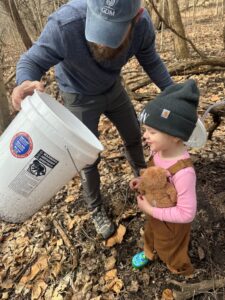


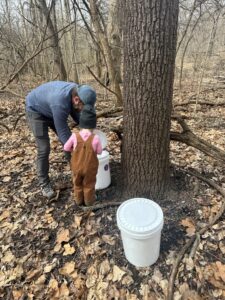

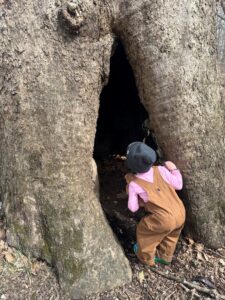

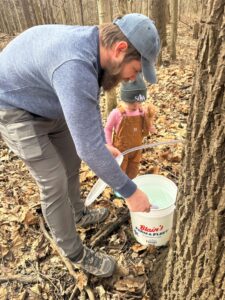
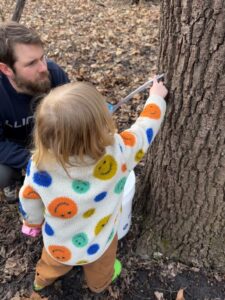
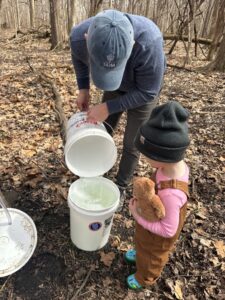
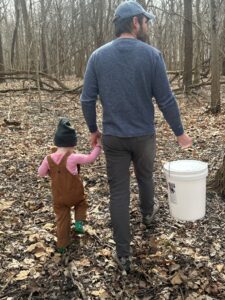

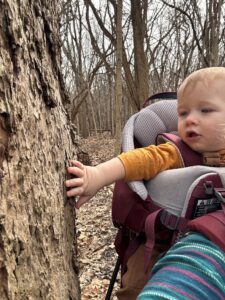
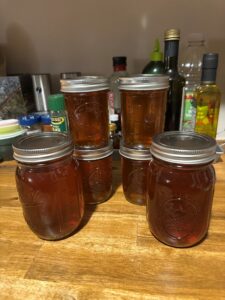

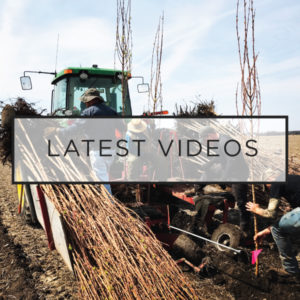



Great post! Scientific, yet heartfelt. What a way to encourage others to get out in nature and try something new.